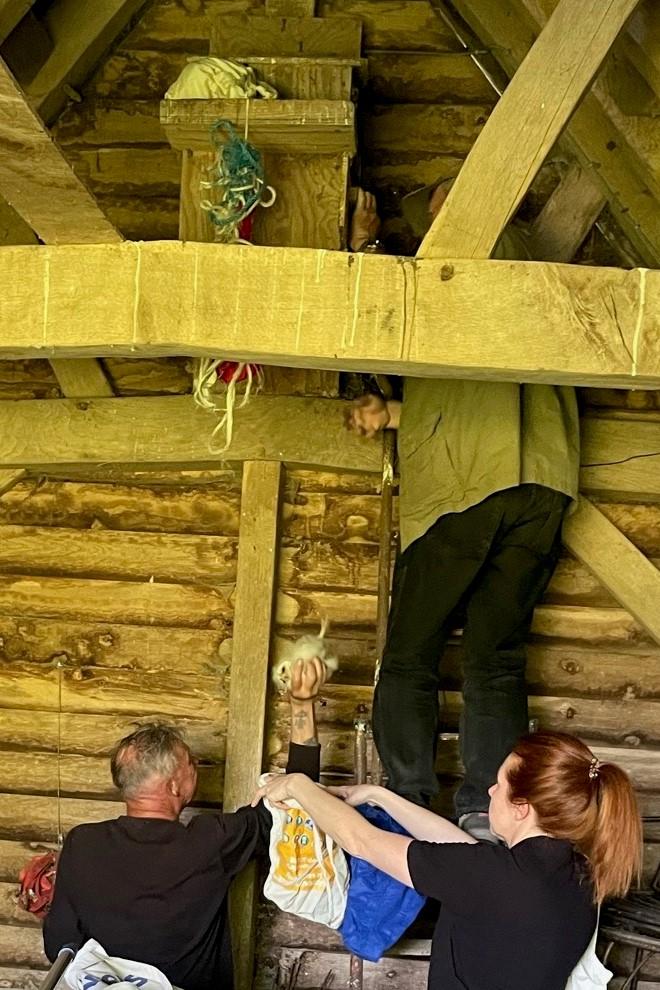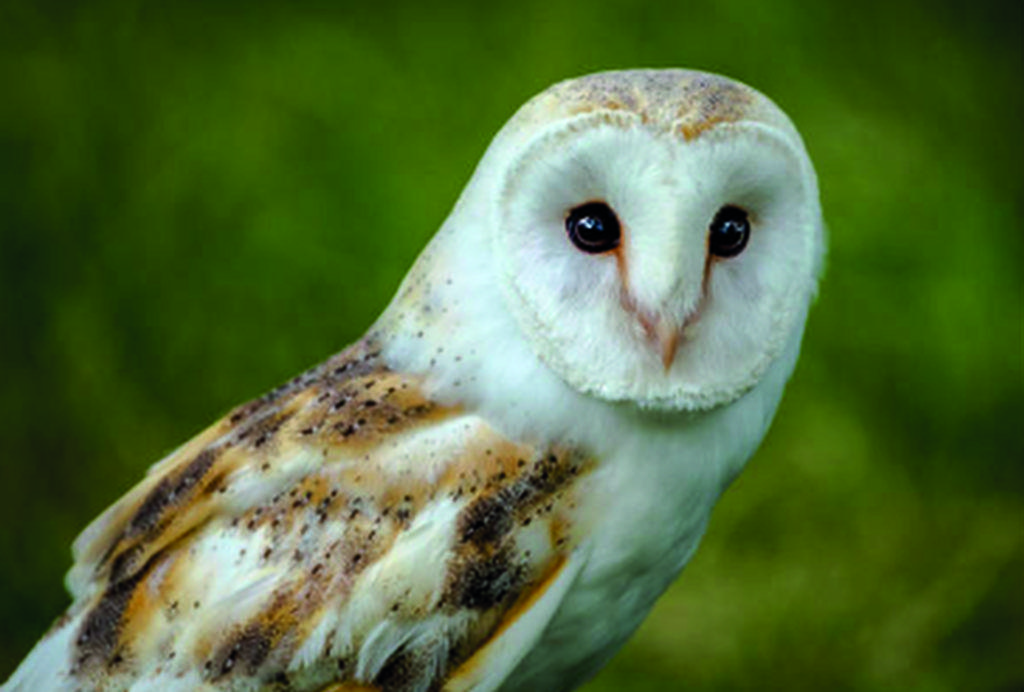By Mike Lavelle
We have seen barn owls in the area for many years, but in February 2008 we had a small oak-framed cart-shed erected just next to the garden, and I put up a barn-owl nesting box at the back of the shed straight away. By June of that year, we had a male roosting in the box, and shortly after, he was joined by a female. In 2012, I installed a camera in the box, with a wire going across the lawn and feeding into the television in the kitchen. From then on, we were able to watch the owls. For several years, there was a pair in the box, but no eggs, but in March 2019 the female changed. We knew this because the previous female had a leg ring, and this one had no leg ring. The following month, the new female started laying eggs, and she laid 4 that year.
Since then, we have had owlets every year, usually 3. There is often an “extra” egg that does not hatch. This year, the female laid 5 eggs. Four hatched, but sadly one of the owlets died. It never seemed to thrive, and was very small. We don’t think that it was eaten by the others, because food seems to be very plentiful. As you will see from the videos, the 3 remaining owlets are doing really well.
On 13th June, we had the three owlets and the female adult ringed by the Sussex Barn Owl Trust. The owlets were noted to be very well nourished, and so we hope that they will reach adulthood and find their own areas in due course.
The following pictures show the owlets and the mother being ringed. The entrance to the box is blocked with a small cushion, which is inserted gently into the opening so that any owls in the box cannot escape. The box has to be approached very quietly to do this. The door at the side is then removed, and each owl is taken out by hand and put in a soft bag.


The owls do not struggle or try to escape, and just lie there without moving. You can see the ringing being undertaken, and then the last video shows the young owls and the mother being put back in the box. All 4 were weighed and various measurements of their wing feathers were taken. Since then, there has been no sign of distress, and the young owls are thriving and getting through several mice each, every night.
